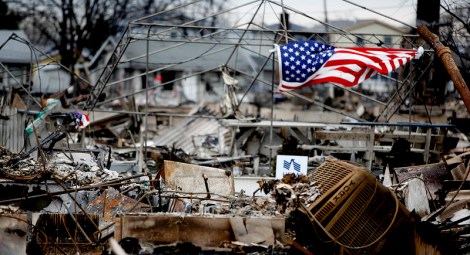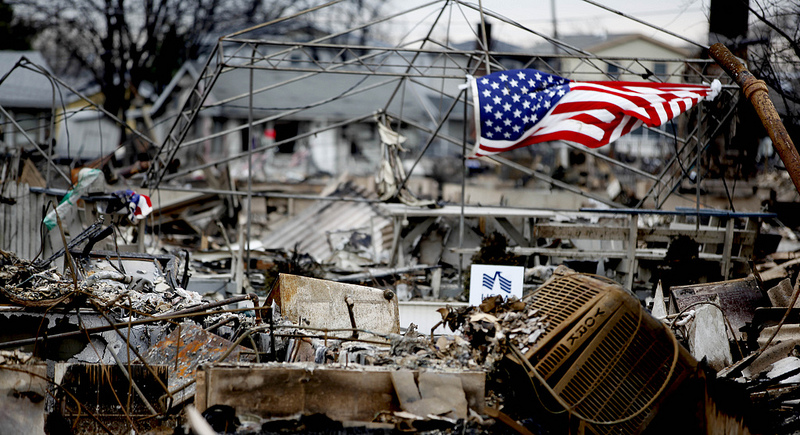It has been 87 days since Hurricane Sandy hit the Northeast. The past three of those days have fallen during the coldest week in New York City in 17 years.
From The New York Times:
As the region suffers through a brutal cold snap this week, with temperatures so punishing that uncovered slivers of flesh feel like paper cuts and the slightest wind can send a chill through the teeth like a Popsicle, the best solution seems not to leave home. But for many people whose boilers were flooded by seawater during Hurricane Sandy and still languish, awaiting repair, home is as frigid as the outdoors.
Residents who have made do with cold homes under extra blankets and triple socks since the storm hit in October face new challenges as the thermometer continues to dip. Temperatures this week have been about 10 to 15 degrees lower than midwinter averages, according to the National Weather Service, and are expected to slide into the teens over the next few nights, and could even fall into the single digits in parts of the region.
As of Tuesday, New York City’s Rapid Repairs construction teams had restored heat, hot water or power to 12,247 residences in 7,112 buildings, according to Peter Spencer, the spokesman for the Mayor’s Office of Housing Recovery. But work is continuing in an additional 1,893 buildings, a substantial portion of which, Mr. Spencer estimated, remain without heat.
Daniel Choi’s house doesn’t have heat, the Times reports. Neither does Devon Lawrence’s. Retired nurse Hazel Beckett is warming bricks on her stove to stay warm.

dvidsBreezy Point, Long Island.
Most of the still-powerless homes are in the areas of New York along the coast, the neighborhoods deluged by storm surge: the Rockaways, Staten Island, Breezy Point. For years before the storm hit, these were the neighborhoods understood to be most at risk, but little was done to prepare them. Now New York Gov. Andrew Cuomo (D) is reluctant to rebuild in them. Again, the Times:
“There are some parcels that Mother Nature owns,“ he said earlier this month in his official State of the State speech. “She may only visit once every few years, but she owns the parcel and when she comes to visit, she visits.”
To deal with such intrusions, the governor wants to give homeowners in these areas a choice. New York will help them rebuild a better house — on stilts, for example, higher than future floodwaters. Or they can sell what’s left of their homes to the state and move to higher ground.
Details of his proposal — called the Recreate NY-Smart Home program — are still being worked out, and it is hard to say how many New Yorkers will take him up on his offer to relocate. It is also hard to know how much money Mr. Cuomo will be able to spend per house, since this program will be part of a larger Sandy package that includes protecting subways and utilities and creating a fuel reserve to manage future gas lines.
Should Cuomo need ready-made stories in his push for smarter rebuilding, he could turn to elderly Hazel Beckett and her warmed-up bricks. This is a scene that should never have happened — much less three months after the fact.



